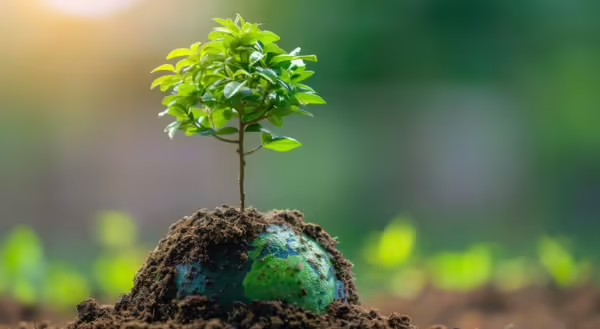
Happy Arbor Day! This celebration began in 1872 as a day to plant and appreciate trees in the natural world around us. With over 150 years celebrating Arbor Day, various states and countries have helped plant new trees and educate various populations about why trees are so important in our communities. In celebration of Arbor Day, let’s chat about Chinquapin Bluffs, where you can see various types of trees, including the Chinkapin Oak, which is the tree that the preserve is named after.
Chinquapin Bluffs
Chinquapin Bluffs Land and Water Reserve in Woodford County is one of Parkland’s beautiful sites where community members can enjoy fresh air and see various facets of nature. Covering 765 acres, Chinquapin Bluffs can bring joy to all from hiking the trails, exploring the river, or participating in archery hunting season. University of Illinois Extension Master Naturalist and Parkland Stewards dedicate their time to removing invasive species, monitoring trails, leading educational events, and other tasks to enhance the outdoor experience for visitors.
This great space is filled with a variety of plants, but is notably named after the Chinkapin Oaks, Quercus muehlenbergii, which reside in a savanna near the north section of the park. Chinkapin oak is native to the Midwest, specifically the Chicago region according to Swink and Wilhelm’s Plants of the Chicago Region. These oaks grow to be large trees measuring between 50-80 feet high, and 50-70 feet wide. Many parks and residential areas plant Chinkapin oaks which enjoy full sun and provide pleasant shade.
Quick notes to ID Chinkapin Oaks
Leaf Shape- Alternate and oblong, narrowing at the top and bottom
Margins- Scalloped or serrated. Leaf measures 4-6 inches long
Leaf surface- top is shiny green with paler underside
Bark- Light grey and slightly flakey
Acorns- half to one inch long and egg-shaped. When mature, acorns turn dark brown
Oaks have catkins (male flowers)
Taking care of Chinkapin oaks
Chinkapin oaks are often planted in parks or residential sites. They prefer full sun and are best grown in deep rich soils. However, these trees are often found on dry limestone slopes and hillsides. Anthracnose and oak wilt can be issues for this tree, but if properly planted and cared for, these trees can live for over 100 years.
This Arbor Day, remember to admire the trees and take an extra moment to appreciate the environmental, cultural, and material benefits they provide us. If you’re able to, plant a tree as we celebrate Arbor Day together!